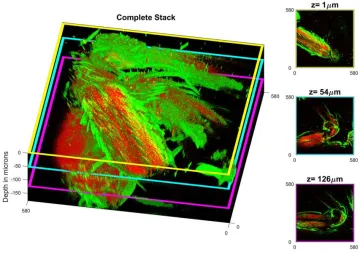Another Wavelength: Ben Cromey

This month in Another Wavelength, we chat with Ph.D. Student Ben Cromey. Ben is currently mentored by Khanh Kieu in the Ultrafast Fiber Lasers and Nonlinear Optics Group and graduated May 15, 2020!
Where are you from?
I am a Tucson native!
What brought you to study optics?
I saw a presentation by the Optics Ambassadors as a high school student at a career fair. I already knew a little bit about optics, since my dad works with microscopes in the U of A department of Cellular and Molecular Medicine. When they saw I already knew that laser was an acronym, and I had an understanding of how polarized sunglasses work, they sought me out and gave me a flyer for a summer camp at OSC. In that summer camp, I saw tons of labs all around the building (including the lab I would work in as an undergraduate!) and was introduced to so many new concepts. It blew my mind, and I never questioned going into optics after that. I had too much fun in undergrad to stop there, and now here I am after defending my PhD.

Who is your hero in science?
Antonie van Leeuwenhoek, who very cleverly made tiny lenses for microscopes of his own design, and made them well enough to observe single cell organisms. It is believed that his microscopes back in the late 17th century that could magnify up to 500 times!
Describe your research in 20 words or fewer.
I design and use a special microscope that can see useful information in unstained tissue and capture information in 3D.
Describe your research in 200 words or fewer.
I work with multiphoton microscopes, a special type of microscope that uses physics called nonlinear optics to take pictures of samples. With these microscopes, we can look at tissue straight out of someone’s body with high resolution and in 3D. A normal microscope would need to have that tissue cut into thin slices and processed with chemicals in order to take good pictures, but our system can use unstained tissue, allowing us to help diagnose diseases faster. This year, we have built several new lasers and a new microscope system that gives us even greater capabilities than we had previously. We have used these microscopes for many projects in my time here, but two of my favorites have been pancreatic cancer samples, and gems and minerals. In pancreatic cancer, we are working to increase the odds of survival by ensuring the cut margin in surgery is clean of cancerous tissue. We can check much faster with our microscope and get more information than traditional methods of examination. In gems and minerals, we were the first to show the incredible information that can be gathered in 3D from these samples.
Name three neat facts about you.
- I've been an amateur voice actor for about ten years now for a Star Trek podcast, Outpost: A Star Trek Fan Production. You can find the episodes on our website or on other platforms such as Spotify or iTunes. I've played five different parts, and I play a recurring part as a Ferengi character. I actually considered going into acting instead of engineering, so it's nice to have this outlet for being an actor.
- I've been into photography since my first huge 3 megapixel digital camera back when I was 12, and I've been into it ever since. I took second place in the 2018 OSA photography contest.
- I've played guitar since I was 13, and have enjoyed singing and making music with my family for even longer.
Check out Ben's video for the Astronaut Scholar Challenge!
Research Caption: a 3D render of a portion of a mosquito from Ben's new microscope.
